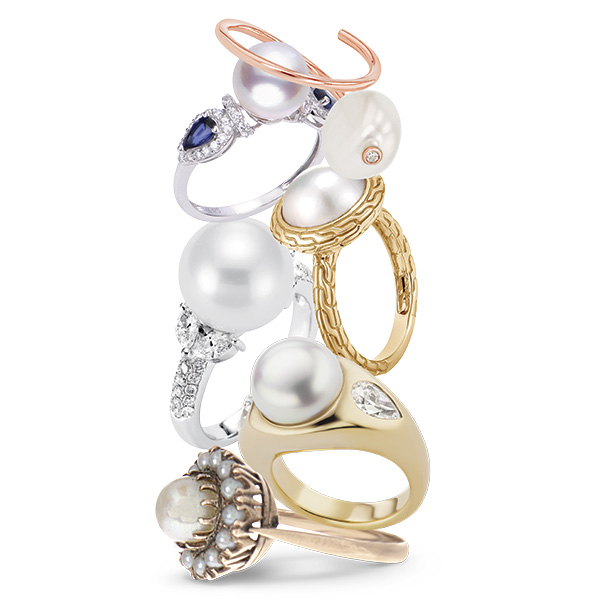
The luminous gem is popping up in engagement rings. Jewelers, hear us out: Start tracking this microtrend as a way to diversify your bridal business.
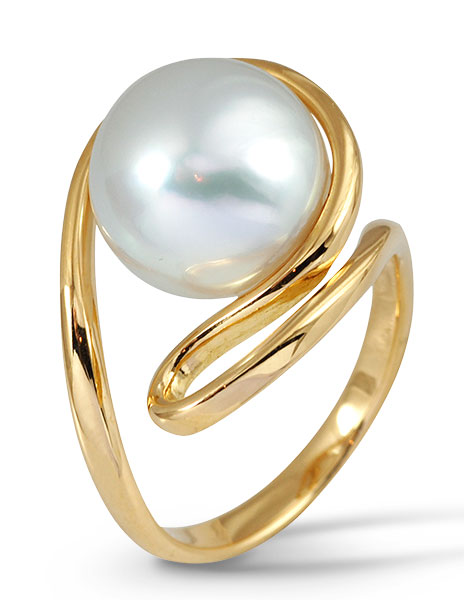
Blank stares. Wrinkled noses. And one “Uhhhh…no,” coupled with an expression that seemed to ask, “Are you nuts?”
These were the responses JCK received when we asked various pearl dealers and designers if they, like us, had picked up on a budding pearl engagement ring trend led by two top celebrities, Emma Stone and Michelle Williams.
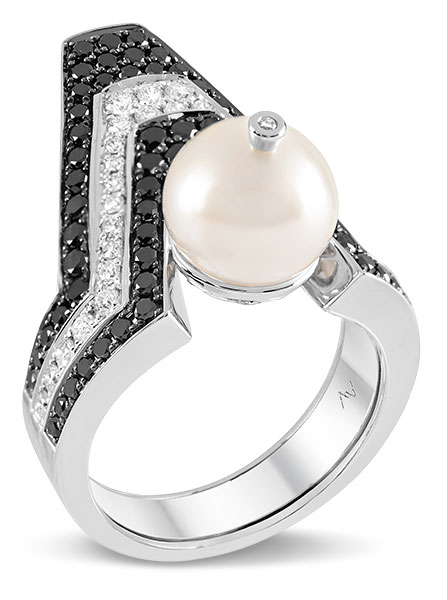
Not surprisingly, the idea of placing one of nature’s most vulnerable gemstones in a ring intended for everyday wear is unpalatable to bridal jewelry pros whose businesses hinge on diamond sales. But knowing that celebrity engagement ring choices often trickle down to the mainstream, pearls could be the next chapter in the millennial and Gen Z customer’s quest for alternative center stones (see also: morganite, Montana sapphires, and salt-and-pepper diamonds).
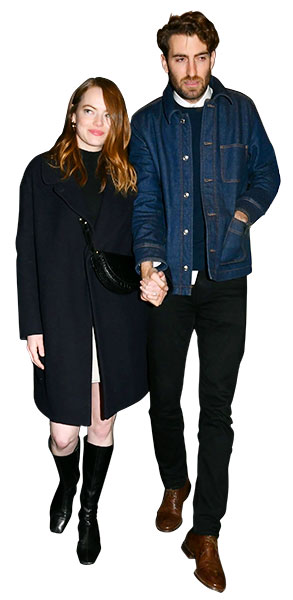
“I was a little shocked at first when Emma and Michelle picked pearls,” says Severine Ferrari, founder and editor-in-chief of Engagement 101. “However, there is a growing trend of celebrities picking unconventional engagement rings that are only worn for public appearances and special occasions. And everyday women have multifaceted lives and often don’t wear their engagement rings all the time for practical reasons. If this is your lifestyle, the durability of the center stone is not on the top of your list.”
The idea of a pearl engagement ring isn’t unprecedented—in fact, a quick search on 1stDibs.com reveals a number of antique versions. In the Anne of Green Gables series, set in the late Victorian and Edwardian eras, the heroine requests a “circlet of pearls” for her engagement ring. Another pearl girl: Woolworth heiress Barbara Hutton, who received a black pearl ring from Cartier when she became engaged to Prince Alexis Mdivani of Georgia (they married in 1933).
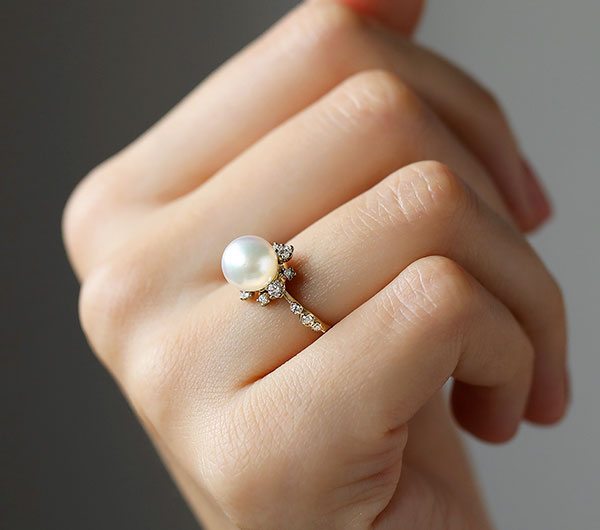
But it’s fair to say that the durability of yesteryear’s pearl engagement rings was less of a concern then because a woman’s lifestyle was less active. Today, diamonds are infinitely more practical because of their resistance to chips and scratches. They can also withstand a splash of perfume or a mist of hairspray. Pearls definitely can’t. So why would a 2020 bride knowingly ignore this?
“At the end of the day, a center stone is chosen based on what it means to the couple,” says Anis Boudraa, chief operating officer of Japanese fine jewelry brand Kataoka, which made Emma Stone’s delicate feminine ring. (Stone’s fiancé, Saturday Night Live segment director Dave McCary, purchased it at Catbird in Brooklyn, N.Y.)
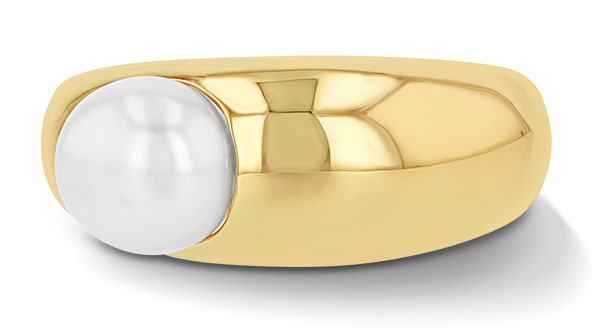
Boudraa thinks that pearls are appealing to brides because they’re “immaculately timeless and divinely pure, symbolizing beauty, integrity, and abundance.” He has also observed a general uptick in interest in pearl engagement rings among his clients over the past few years.
New York City–based designer Ashley Zhang reports that her Giverny ring, which features an akoya center stone rimmed by diamonds, is one of her most popular bridal styles. “The client that chooses a pearl as the center stone is usually the type of girl who doesn’t own much fine jewelry and has more of a minimal and laid-back style,” she says.
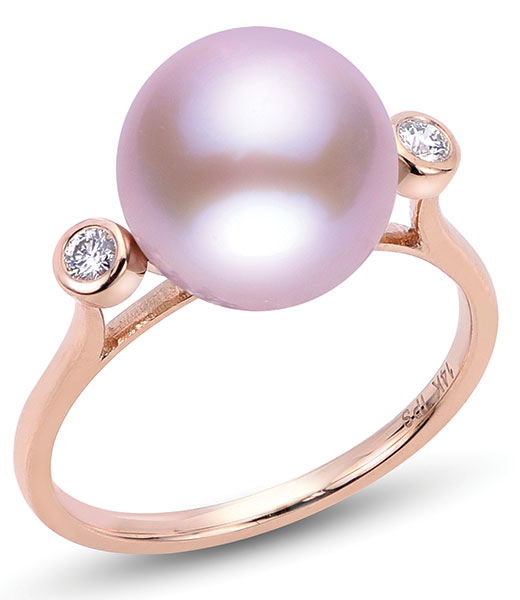
Los Angeles–based jewelry designer Grace Lee thinks consumers are taken with the idea of pearls being an au naturel product. “A diamond needs to be polished and cut to shine, but pearls are literally beautiful out of the shell,” she says.
For the record, the Cultured Pearl Association of America is on board. The organization’s official statement: “Pearls’ heritage as a symbol for love and celebration is legendary—unlike diamonds (a marketer’s creation). Some might ask if a pearl is appropriate for daily wear, but it really depends on the individual. It’s a matter of lifestyle and personal choice.”
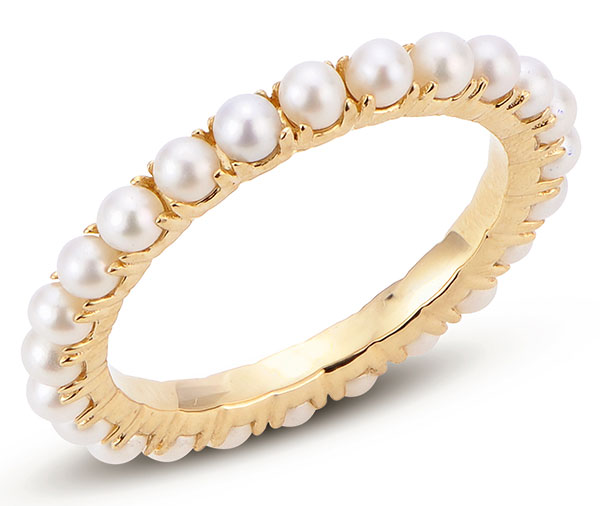
Take, for example, Jennifer Markas, executive director of the Women’s Jewelry Association, who recently opted for a pearl engagement ring by the designer John Hardy. “I know pearls are different, and that is just my personality,” she says. “They feel fresh, classic, elegant, and they go with everything.” And having grown up in Southern California, Markas loves that the gems are harvested from the sea.
Retailers who are hesitant to indulge requests for pearl engagement rings might be encouraged by Zhang’s approach: “I don’t caution against it,” she says. “I usually recommend also buying a wedding band made with stones that are less susceptible to damage that they can wear every day.”
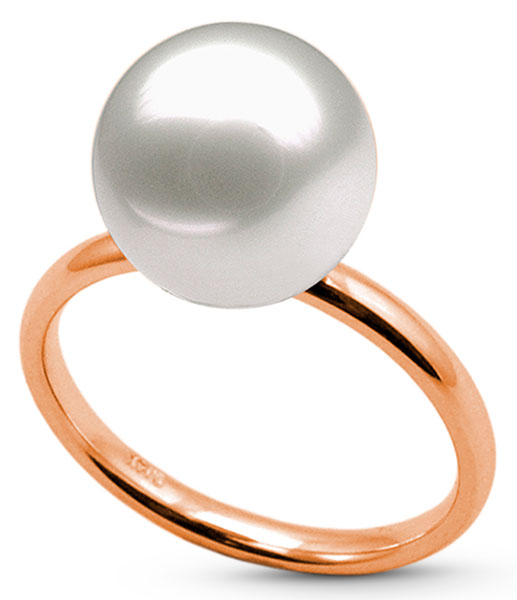
And remember that some couples see the pearl ring as a price-conscious placeholder and are planning an upgrade down the road.
“Don’t come back with ‘pearls should not be worn as engagement rings,’ ” says Ferrari. “Find language that is honest about the properties, value, and wearability of the ring they want without raining on their parade. Chances are they might listen. And even if they don’t change their mind, it could be the start of a long-term relationship based on trust and understanding.”
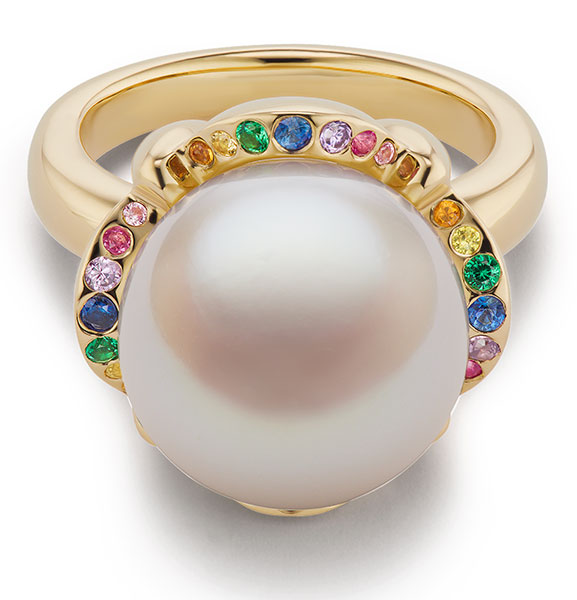
The heart wants what it wants, and for a growing number of brides, that means pearls on their ring fingers.
Who are we to judge?
Top ring stack (from top):
Baroque pearl coil ring with diamond dot in 14k rose gold; $538; Grace Lee; contact@gracelee.com; gracelee.com
Sapphire, pearl, and diamond ring in 14k white gold; $2,695; Imperial; customerservice@imperialpearl.com; imperialpearl.com
Classic chain ring with mabe freshwater pearl in 18k gold; $1,395; John Hardy; 888-838-3022; johnhardy.com
Sorrento Marry Me ring with white freshwater pearl and diamonds in 18k white gold; $4,145; Mastoloni; info@mastoloni.com; mastoloni.com
Gypsy ring with South Sea pearl and pear-shape diamonds in 18k yellow gold; $12,000; Brent Neale; meaghan@forfuturereference.com; brentneale.com
Victorian pearl cluster ring in 14k gold; $645; Heritage by Ariel Gordon; wholesale@arielgordonjewelry.com; arielgordonjewelry.com